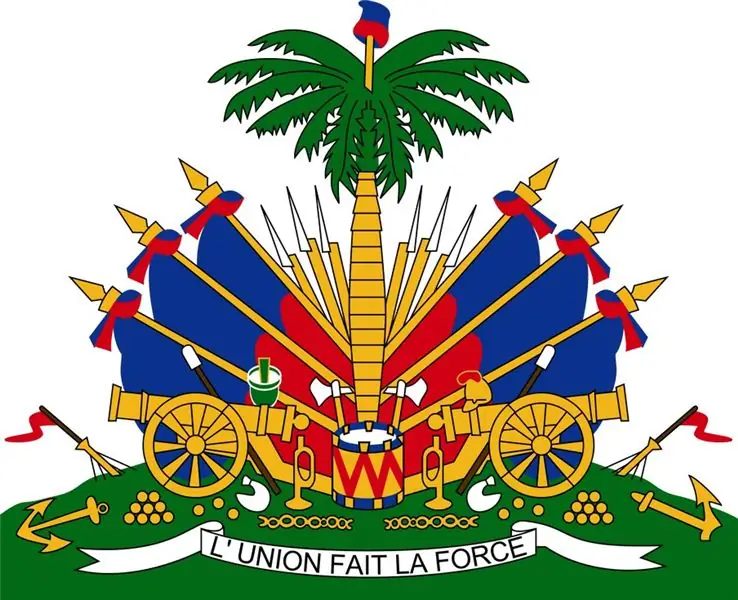
Among the main state symbols of our planet, the coat of arms of Haiti is probably the most belligerent. The central place on it is occupied by various types of weapons and objects that symbolize war trophies. The artists who developed the sketch subconsciously tried to present the country as combat-ready, ready to defend its borders.
History of the coat of arms of Haiti
The appearance of the state symbol is associated with the struggle for independence from France and the acquisition of freedom. The main achievement of the Haitian revolution is the formation of the first republic on the planet, led by blacks. In addition, Haiti is the second independent state in America, after, of course, the United States.
The country gained independence in 1804, and the coat of arms was approved in 1807. It existed for more than forty years, until General Faustin seized power, while he referred to himself as Emperor Faustin I.
In connection with such a change in the political situation in the country, the coat of arms received imperial attributes, which remained until 1859, until the country again returned to the republican form of government. Accordingly, the coat of arms of Haiti returned to its former appearance, further changes were minor.
Main elements
The image of the main symbol of the Republic of Haiti is a reflection of historical events, modern realities and hopes. Among the many details stand out: a palm tree topped with a Phrygian cap; various weapons; battle pipes; anchors; motto written on a white ribbon.
The tropical palm depicted on the coat of arms is eutherpa (eutherpa), it is also called cabbage. It is native to South and Central America. In the main symbol of Haiti, it symbolizes the wealth of the country.
The Phrygian cap is a symbol of freedom in Medieval France, which migrated across the Atlantic Ocean and took place on the coats of arms of many states. But with weapons, the situation is the opposite, its various types gathered on the Haitian symbol. There are firearms (guns, cannons), and cold (axes) weapons, and shells (cannonballs), and trophies (flags, anchors).
The color palette of the coat of arms of Haiti also pleases with its variety and brightness: a green island and feathery palm leaves, blue and red colors present in the colors of flags and caps, many yellow details. The composition is crowned with a snow-white ribbon with the inscription “Union creates strength”.






